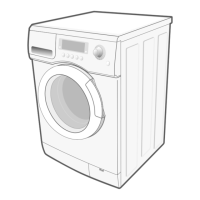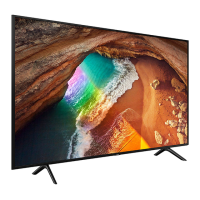In the first installment of this series last month, we began examining the basic operation of and troubleshooting for Sam-
sung Plasma TVs.
In particular, we examined the VITAL SIGNS—the Vs, Va, Vsc, and Ve voltages—and their importance.
The Vital Sign voltages can be taken in less than 5 minutes and not only greatly assist in the immediate repair diagnosis
but also prevent future failures. (Redo!)
These voltages are specifically set for a given panel and are so important that their values are printed on a sticker inside
the back of each panel. See the example label below.
Even though the 2010 models have additional failsafe circuitry that shuts down the start up sequence in approximately 3
seconds if an over voltage or under voltage/high current condition occurs (short), you still have plenty of time to check
the voltages. Simply hook up your volt meter before you turn on the Plasma TV and be ready to take your readings.
Let’s continue to look at some of these voltages and what they do.
Vs: Sustain Voltage
Discussed last issue, the Vs Sustain Voltage is generated by the SMPS (Switching Mode Power Supply) and operates at
approx 200 volts (in the example label above, 212V). It is used by both the Y-Board and X-Board assemblies to help
produce the sustain drive signal to the plasma cells of the panel. Without the Vs voltage, the drive signal cannot exist
and the cells cannot light, leading to a dead looking panel. If the Vs is missing, causing an under voltage/high current
condition (typically shorted), 2010 models will shut down within 3 seconds.
If this voltage is misadjusted too high or too low, specks or dots appear causing a cell misfiring condition commonly
known as a ―Diffusion‖ condition. Setting this voltage properly can eliminate this condition.
Va: Address Voltage
Also discussed last issue, the Va Address Voltage is generated from the SMPS and supplies approximately 60 Volts
(54V in the example label) to the Logic Buffer Boards, commonly known as the Address Boards, located in 2010 models
on the bottom of the panel. If this voltage is missing, low, or high, the Address Boards will not operate properly. If this
voltage is incorrect, cell misfiring and/or noise such as vertical bars or vertical segments may appear, since addressing
occurs vertically up the screen.
Now let’s look at Vsc and Ve.
Page 13
Volume 4, Issue 11 Consumer Electronics Newsletter Samsung Tech Talk
Plasma TV Repair Made Simple, Part 2
Charles Russo
Trainer—RTSC
NTSC NTSC/PAL
Va Vsc Vs Ve
55 -190 212 100
Rev. 2.0

